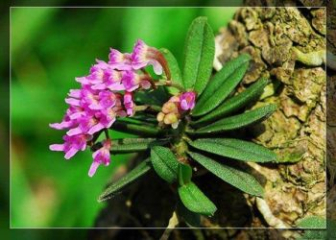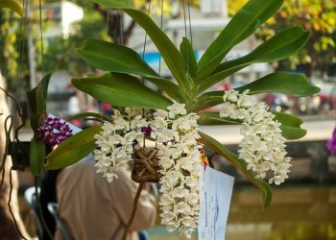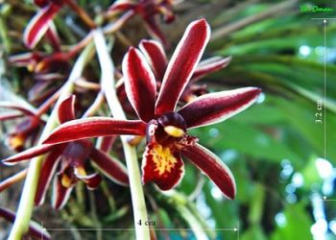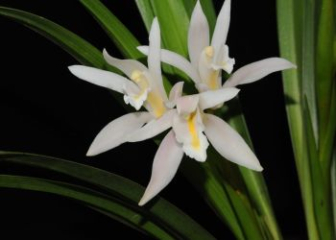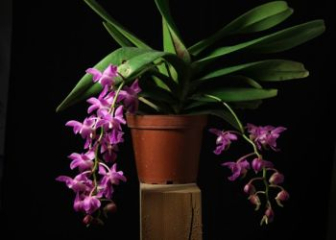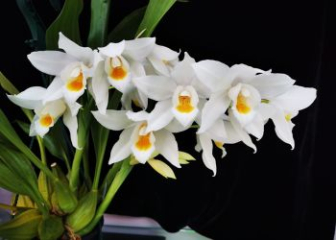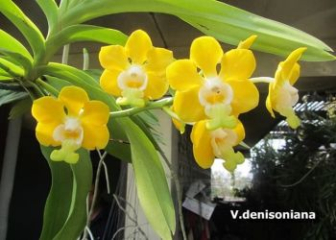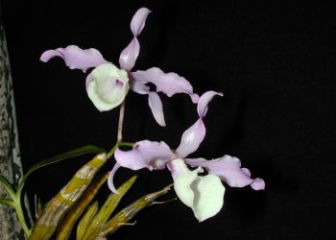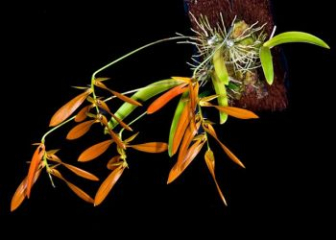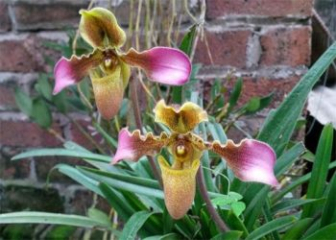Chicken Thigh Orchid - Origin, classification and growing techniques
Blog | by
Dendrobium latifolium (orchid) is a drooping wild orchid, easy to grow, has a pleasant fragrance and blooms profusely during Tet. Learn how to grow it in detail here!
Chicken Thigh Orchid is one of the most popular wild orchids in Vietnam thanks to its rustic, unique beauty and ability to bloom profusely during the New Year and spring. This orchid species not only impresses with the name "chicken thigh" but it is also very easy to grow and care for, completely suitable for those without much experience.
In today's article, let's learn more about the characteristics, origin and how to properly grow and care for chicken thigh orchids to own beautiful orchid pots that bloom in the right season.
Origin & distribution of chicken thigh orchid
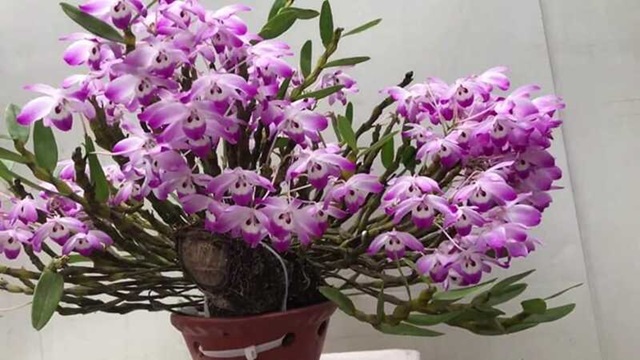
A pot of chicken thigh orchid with lots of flowers.
Dendrobium nobile Lindl, also known as chicken thigh orchid, scientific name is Dendrobium nobile Lindl, belongs to the genus Dendrobium, was first scientifically published in 1830.
The name "chicken thigh" is actually a Vietnamese folk name based on the shape of the stem that swells at the base like a chicken thigh and they are also classified in the group of native wild orchids of our country.
In nature, orchids are commonly distributed in the following countries:
- Vietnam: Northwest, Northeast, Central Highlands.
- Laos, Thailand, China.
- Nepal, India, Bhutan,...
Before 2000, the orchid was mainly exploited from nature, however from 2005 to 2015, this orchid species was mass-produced by separating kie or sowing seeds.
Classification of chicken thigh orchids
Currently, the chicken thigh orchid is divided into two main types: round chicken thigh orchid and flat chicken thigh orchid. They have the following specific characteristics:
Round chicken thigh orchid
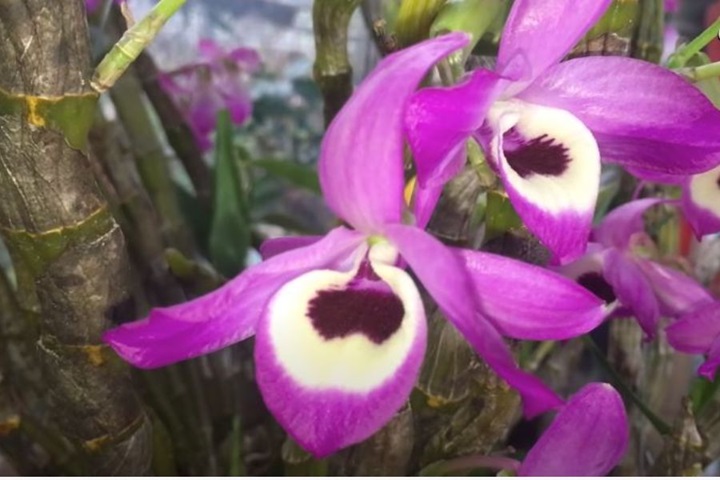
Close-up of round orchid face with sharp dark purple color.
Round chicken thigh orchids often originate from natural forests in the northern provinces such as Lai Chau, Northwest, Yen Bai, with the advantages of being easy to domesticate, taking root quickly and being very suitable for the climate of the North and Central regions of Vietnam.
Characteristics of round chicken thigh orchid:
- Cylindrical body, average length from 35 - 60 cm, usually yellow-green. Has plump longitudinal grooves, diameter from 1 - 1.5 cm when mature.
- The flower has a deep purple-pink color, purple-black throat, beautiful, with a strong, impressive fragrance.
Flat-legged Dendrobium
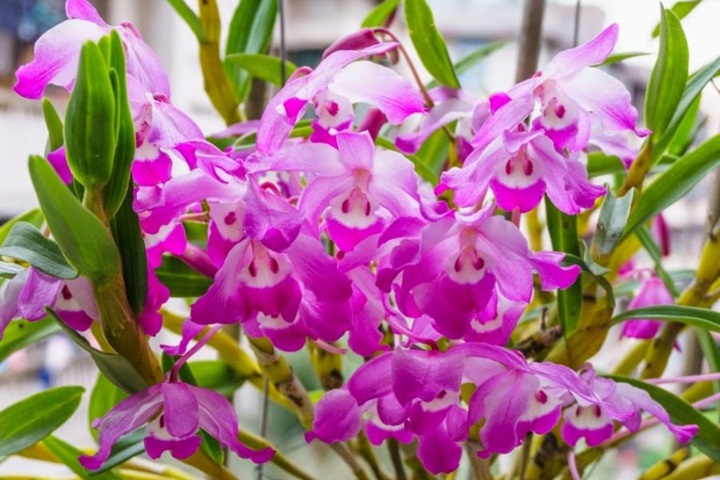
Flat rooster leg orchid with pale pink purple color.
Round chicken thigh orchid is a type of orchid mainly imported from Laos and Cambodia. It is more difficult to domesticate than round chicken thigh orchid, but once domesticated, it grows very quickly and has beautiful flowers.
Characteristics of flat chicken thigh orchid:
- The stem is shorter than the round chicken thigh orchid, only 25 - 40 cm
- Flat body, with many longitudinal grooves.
- The top of the leaf is divided into two lobes.
- The flowers are smaller, paler in color and less fragrant than the round chicken thigh orchid.
How to identify chicken thigh orchid

Characteristics of flowers, stems and leaves of orchids.
The chicken thigh orchid is known as one of the wild orchid species with a special stem shape and beautiful, abundant flowers. Let's find out the details in the content below.
Close :
- Cylindrical, bulging at the base like a “chicken thigh”
- Has a glossy blue or light purple color
- 30 - 60 cm long, sturdy, with many dormant buds.
Leaves :
- The leaves are oblong, lanceolate, and grow alternately on both sides of the stem.
- Has light blue color
- Fall in winter to prepare the tree for flowering.
Flower :
- Grow in clusters from old stem nodes
- Has 5 petals and 1 lip
- Light purple pink, round petals, slightly upturned, lip petals are ivory white or purple white, flower throat is dark purple or light purple depending on the variety.
- Each node can produce 1 - 2 flowers, each stem has 5 - 15 flowers.
- Light, pleasant fragrance, lasting from 7 - 10 days.
Detailed techniques for planting and caring for chicken thigh orchids for beginners
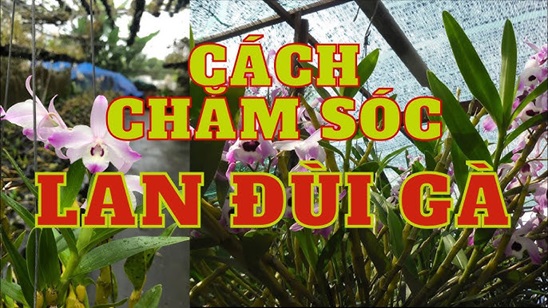
Detailed instructions for growing chicken thigh orchids.
If you are new to orchids and do not have much experience with the chicken thigh orchid, please refer to the detailed techniques for planting and caring for the chicken thigh orchid that we share below. Guaranteed simple but brings surprising results, let's find out now!
Selecting and processing chicken thigh orchid varieties
This is a very important step that determines whether your orchid pot will quickly take root and grow well. Please note the following.
- Choose quality seedlings, plump trunks, no pests or diseases, no waterlogged roots, prioritize plants with many dormant buds.
- Trim diseased leaves, damaged roots and use scar glue to disinfect the cut.
- Hang the seedlings upside down in a cool place for about 1 day.
- Soak the entire orchid plant in Physan 20 SL solution for 15 - 20 minutes to kill fungus, then remove and drain.
- Soak the tree base in root stimulant solution with a dosage of 1ml/1 liter of water for 2-3 hours, then let it dry before planting.
Choose the right substrate for chicken thigh orchid
Here are some cheap, well-drained, and airy growing media suitable for chicken thigh orchids. Please refer to them.
- Pine bark, coir, charcoal, coconut fiber, driftwood, terracotta pots,...
- The growing medium needs to be sterilized by soaking in lime water for 1-2 days or drying in the sun before planting to avoid pathogens.
Techniques for growing/grafting chicken thigh orchids
Planting and grafting Dendrobium orchids onto wood or pots is not simple, please refer to the following instructions carefully.
Grafting chicken thigh orchid onto wood:
- Use thin steel wire, copper core or zip tie to fix the chicken thigh to the wood. If the body is large, thread 2-4 wires to fix it firmly.
- Thread the wire through the joints, avoiding the eyelets.
- Turn the orchid stem up and use a rope to secure it to prevent the wind from causing the plant to sway.
- Note, avoid letting the tree base come into contact with metal because it can easily rust and damage the tree base.
Growing orchid in pots :
- Line the bottom of the pot with a layer of crushed charcoal.
- Spread another layer of longan wood to retain water for the tree, then spread a layer of pine bark mixed with coconut fiber on top.
How to care for chicken thigh orchid
To help the orchid grow well and bloom in season, you need to pay attention to environmental conditions, watering, fertilizing and pest control. Find out more details below.
Optimal living conditions for orchids:
Orchid likes a living environment with diffused light, ventilation, high humidity, specifically as follows:
- Light: Maintain 30 - 50%, avoid direct sunlight.
- Temperature: 20 - 27 degrees C
- Humidity: 70 - 80%
- The garden needs ventilation for the plants to grow best.
How to water orchids :
- Early stage after 1 month of grafting: Only use a spray bottle to lightly spray in the early morning to stimulate the plant to root.
- Development stage: For grafted trees on wood or coconut fiber, water 1-2 times/day, for potted trees, water once/day depending on weather conditions.
Fertilize appropriately for each stage :
- Rooting stage: Use NPK 30-10-10, B1, Atonik,... spray on leaves, frequency 10 days/time.
- Plant growth stage: Switch to NPK 20-20-20, fish protein, Humic,... with a frequency of 15 days/time.
- Pre-flowering stage: NPK fertilizer 6-30-30, 10-30-20 every 15 days.
Note : Dilute ½ - ¼ of the recommended dose, spray early in the morning or cool afternoon. Currently, there are many types of organic fertilizers specifically for orchids contained in slow-release mesh bags, you can also refer to them.
Prevention and treatment of diseases for Dendrobium orchids:
|
Disease name |
Symptom |
How to handle |
|
Rotten, rotten root |
The orchid's stem and roots become soft, black, and have an unpleasant odor. |
Cut off the mushy part of the body. Apply lime and spray Ridomil Gold to prevent disease. |
|
Orchid thighs have mealybugs, white aphids |
On the stem, leaves, and dormant buds appear white spots, cotton |
Spray Confidor, Supracide |
|
Orchid with leaf spots and leaf burn |
Orchid leaves appear mottled, withered, yellow, and fall off abnormally |
Cut off spotted, yellow leaves to prevent spreading. Spray Physan 20L to treat and prevent disease |
Tips to stimulate and control the orchid to bloom
To stimulate orchids to bloom on time and keep the flowers fresh for a long time, please refer to some of the following tips:
- After seeing the orchid's thighs fall off, stop watering for 2-3 weeks and then spray flower stimulant with NPK 6-30-30, NAA or Atonik,...
- Hang the orchid pot in a sheltered, high humidity place, turn on yellow lights day and night, combine with watering and spraying fertilizer to stimulate the plant.
- If you want the flowers to bloom early before Tet, stop watering and dry them from October to early November of the lunar calendar, then stimulate flowering from the end of November.
- If you want the flowers to bloom in season in February - March, control watering and fertilizing in early December.
Note :
- Do not stimulate flowering when the plant still has young leaves or is not old enough. Only stimulate flowering when the plant has lost its leaves and has not grown new roots - the dormant stage.
- Do not spray fertilizer or pesticides when the weather is below 15 degrees Celsius.
Price list of chicken thigh orchid
Currently, flat chicken thigh orchids are sold at a higher price than round chicken thigh orchids. For details, please refer to the following price list.
|
Type |
Flat chicken thigh orchid |
Round chicken thigh orchid |
|
Small clump wild orchid |
120,000 - 250,000 VND/bunch |
100,000 - 200,000 VND/bunch |
|
Medium-sized wild orchid |
250,000 - 450,000 VND/bunch |
200,000 - 300,000 VND/bunch |
|
Purebred ham |
350,000 - 600,000 VND/roll |
100,000 - 150,000 VND/roll |
|
The chicken thigh orchid has bloomed. |
800,000 - 1,500,000 VND/roll |
550,000 - 1,200,000 VND/roll |
Note when buying chicken thigh orchid :
- Wild orchids are often more fragrant and durable than industrially propagated orchids.
- If you don't have much experience, you shouldn't buy stems without roots because they can easily die.
- If you want to buy cheap chicken thigh orchids, you should buy them from April to June, after the flowering season.
Questions and answers about chicken thigh orchid?
Is the orchid difficult to grow?
No, the orchid is very easy to grow and is completely suitable for orchid beginners with little experience.
How long does it take for the orchid to bloom?
Normally, after 1 year of grafting the orchid, the plant will begin to bloom.
How to know the orchid is about to bloom?
When you see that the tree has lost all its leaves in winter and begins to develop slightly swollen, pointed eyes, it means that the tree is about to bloom.
Should I grow orchids in pots or on wood?
If possible, plant the orchid by grafting it onto wood or driftwood, because it looks beautiful and does not cause waterlogging. If planting in a terracotta pot, pay attention to good drainage.
Beautiful chicken thigh orchid pictures
Right below is a collection of pictures of the most beautiful blooming orchid pots, please admire them to fully appreciate the unique, rustic beauty of this orchid species.
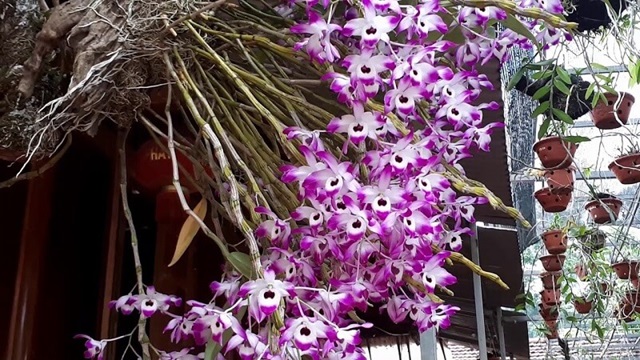
The orchid flowers with dreamy purple color.
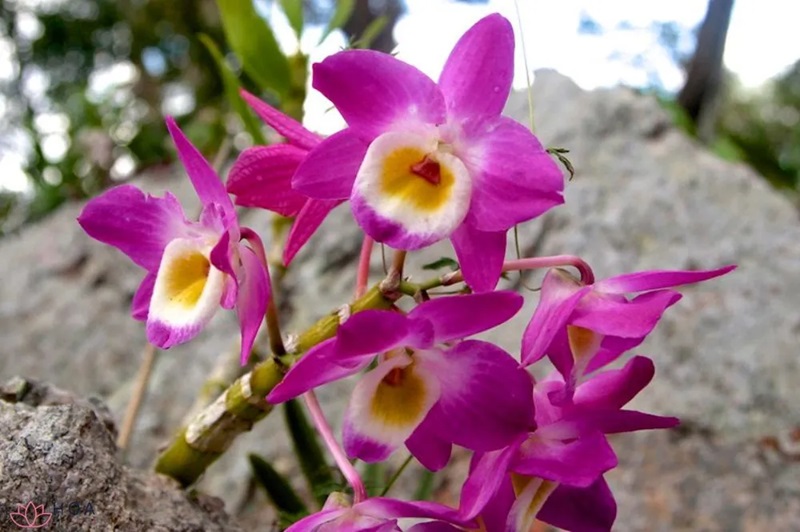
Close-up of the flower shape of the orchid.
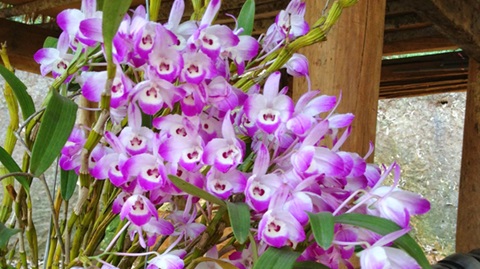
A pot of round orchid in full bloom.
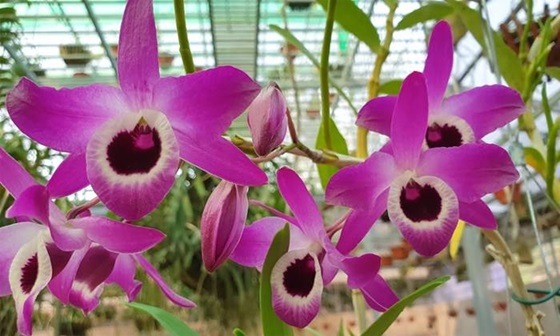
These orchid flowers are grown from super beautiful tissue culture roots.

Wild round chicken thigh orchid blooms very beautifully.
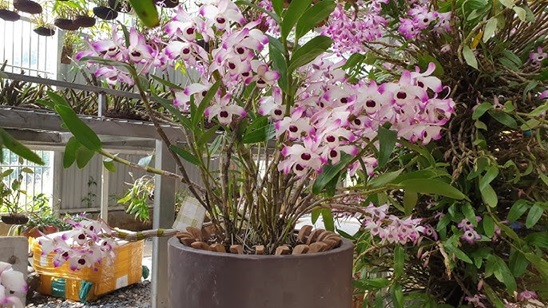
The orchid cluster is grown in a very beautiful pot.
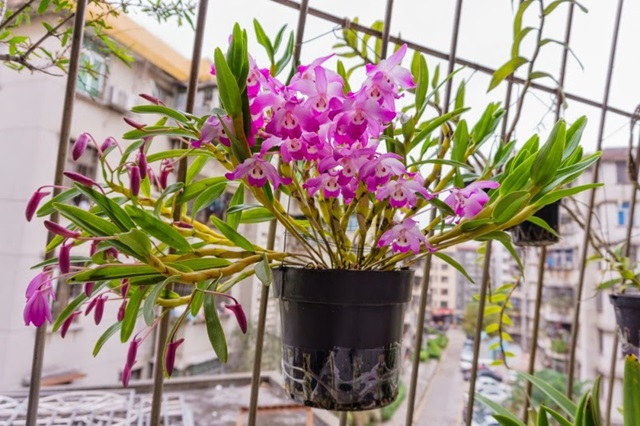
A pot of Dendrobium orchids is hung on the balcony.
With its rustic beauty, strong vitality and simple planting & care, the chicken thigh orchid is increasingly loved and popular among orchid enthusiasts in Vietnam. Hopefully, through the content that orchid-vn.com shares above, it will help you gain more knowledge and experience to be able to grow beautiful chicken thigh orchid pots, blooming many flowers every Lunar New Year.
If you want to learn more about many other beautiful orchids to decorate your garden, please visit our Blog section now.
